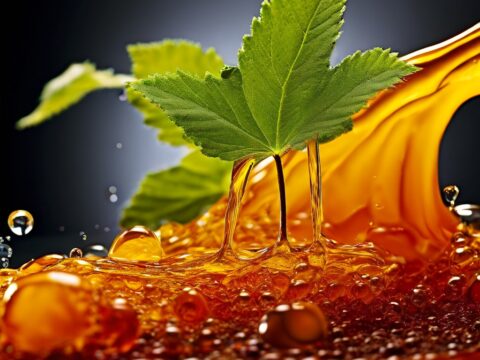Rubberized Bitumen
October 12, 2021
Resin
October 12, 2021Gilsonite is also known as Uintaite,Asphaltite, and asphaltumis a dark brown material that can be used to increase the stiffness of asphalt binders and stability and improve resistance to permanent deformations, moisture damage resistance, and indirect tension resistance.
Stay with us to the end of this article to get more information about gilsonite.
It is a natural asphalt derived from petroleum discovered at least 100 years ago. Million years are needed for glisonite to be produced under chemical processes like heat, pressure, oxidation, and microbe activities. It is usually in form of powder since the solid form is too brittle.
It is worth mentioning that it is resistant to high temperatures, but it cannot resist low temperatures. So different additives are combined with it to improve low-temperature resistance.
Grade Bitumen
Grades are defined in different aspects for bitumen. For example viscosity grade of bitumen and penetration grade of bitumen.
The penetration bitumen is measured at 25 centigrade and the viscosity bitumen is measured at 60 centigrade.
Many modern facilities in the modern world are the result of developments in science, especially chemistry. Through advances in the chemical industry, we can have a material that is used in different fields from painting to road instruction. In this article, we will have a look at grade bitumen.
It is usually found in deposits such as oil sands and pitch lakes. tar or pitch are other names referred to the bitumen, however technically speaking, they have some differences together.
waterproofing and adhesive properties are the main features of Bitumen, It owes the mentioned features to the chemical composition—mainly large hydrocarbon molecules known as asphaltenes and resins, which are present in lighter oils but are highly concentrated in bitumen.
metals, such as nickel and vanadium, and nonmetallic inorganic elements, such as nitrogen, oxygen, and sulfur are the ingredients of bitumen. Bitumen has different types, according to what type of bitumen is needed to be produced, the number of metals differs in bitumen.
Through the process of distillation, lighter components such as gasoline and diesel are removed and the heavier component which is bitumen remains. Apart from the artificial process of producing bitumen, bitumen can be produced naturally, too. It bears years, almost a million years for the natural bitumen to exist.
The composition of the bitumen contains complex hydrocarbons and elements such as calcium, iron, sulfur, and hydrogen.
There are different grades of bitumen based on weather conditions in different parts of the world. Grades are in numbers of 95/25, 85/25, 75/25, 90/40, and 115/15. The mentioned numbers are among the most popular grades.
viscosity grade of bitumen
These grades show the level of viscosity of the bitumen. The higher the numbers are, the higher is the viscosity.
Look at the example below:
The temperature in the below examples is 60 centigrade.
VG_10 Bitumen means the level of viscosity is about 800-1200.
VG-20 Bitumen means the level of viscosity is about 1600-2400.
This example continues in the same formula. For example, VG-60 means the level of viscosity is about 4800-7200
However, the most used grade bitumen in the world are VG-10, VG-20, VG-30, and VG-40.
Thanks for being with us to the end of this article. For more information about grade bitumen you can visit the following site:
https://infinitygalaxy.org/viscosity-bitumen/
Resin
Have you ever seen the sticky yellow viscous liquid on the trees? They are called resins and they are extremely sticky.
They are mostly extracted from trees especially some specific trees like pines and firs.
You may wonder these sticky yellowish viscous liquids are flammable and have large usages in the industry.
But it is not used as naturally as you see it in nature. It must be vapored in the factory till light components of it yield and then the other components are usable for the industry.
The products that are made from resins, all must go through different chemical procedures under controlled environments.
Trees produce resin in order to protect themselves. You may wonder what dangers do threaten trees the answer is flies and insects. I myself have the experience of touching these sticky liquids. And I bet that wasn’t a sweet experience because I had to find water immediately to get rid of this viscous liquid. Most of the resins secreted from plants are made of a chemical component called terpenes.
It is used in the industry for anything you may think is related to stickiness from syrups to the adhesive.
Conclusion
In the above article, we discussed in detail asphalts, Bitumen, types of bitumen emulsion, gilsonite, resin, shale, bitumen performance, grading of bitumen, oxidized bitumen, and rubberized bitumen. We talked about the process from the beginning to the end. We also clarified how to use the material (for example, how to apply rubberized bitumen. We also discussed the usage of different bitumens in different areas, from insulation to the automobile industry.
The most important industry that bitumen and other derivatives are used in is road construction. We can surely say this is the number one demand for bitumen.
Thanks for being with us to the end of this article, hope it will be useful for you.

